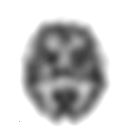
Photo from wikipedia
A single-photon-emission computed tomography (SPECT) system with a lanthanum-bromide (LaBr3:Ce) scintillator was proposed and simulated to detect neutron-activated prompt γ-rays from suspicious materials. The optimized parameters of the SPECT system… Click to show full abstract
A single-photon-emission computed tomography (SPECT) system with a lanthanum-bromide (LaBr3:Ce) scintillator was proposed and simulated to detect neutron-activated prompt γ-rays from suspicious materials. The optimized parameters of the SPECT system were calculated to achieve the best performance. Under the optimized conditions, energy spectra, spatial images, and elemental ratios were obtained and employed to identify hidden materials. The carbon-to-oxygen ratios of the materials calculated through the simulations were consistent with the corresponding theoretical values while the calculated nitrogen-to-oxygen ratios were slightly different from the corresponding theoretical values. In the proposed system, not only the energy spectrum of each element but also the characteristic intensity ratios obtained using the reconstructed images were used to identify the unknown elements of hidden materials in the three-dimensional spatial domain. These results demonstrate the feasibility of using the SPECT system in field applications.
Journal Title: Journal of the Korean Physical Society
Year Published: 2018
Link to full text (if available)
Share on Social Media: Sign Up to like & get
recommendations!